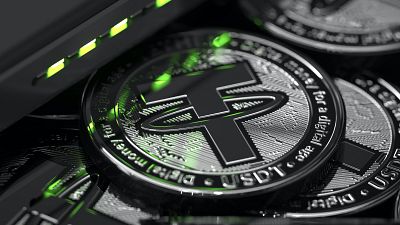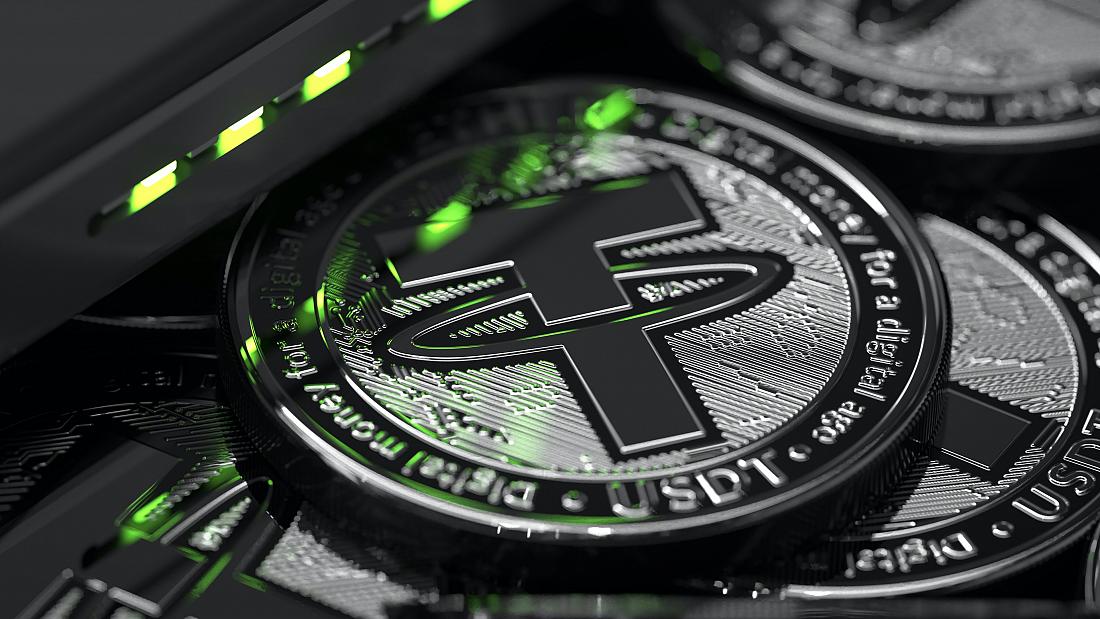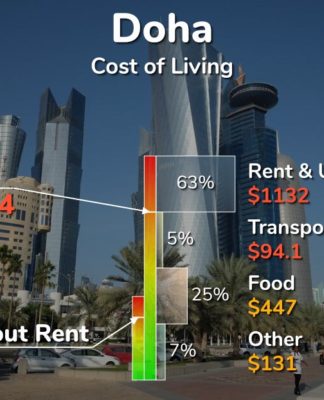Terra Luna crash: What are ‘stablecoins’ and how stable are they really?

The world of cryptocurrencies was sent into a spin with the collapse of stablecoin TerraUSD and its sister coin Luna, whose prices crashed earlier this month.
There’s nothing new about wild volatility in cryptocurrency prices. But investors were caught by surprise by the sudden drop in TerraUSD’s price, because it is a so-called stablecoin.
As the name suggests, the raison d’être of stablecoins is to remain stable, as they are supposed to be pegged to fiat currency, such as the dollar or the euro.
TerraUSD has been pegged almost exactly to the dollar since its release, but on May 9 it crashed, and it is now worth just over $0.11 (€0.10).
Its sister coin Luna was worth more than $80 (€76) a coin at the start of May, and as of 18 May it was worth a fraction of a cent.
The crash of these two coins has been compared to a mini 2008 financial crisis within the crypto eco-system, with their collapse having a knock-on effect on other digital coins and projects, wiping billions of dollars off the market.
This begs the question: are stablecoins actually stable?
What is a stablecoin?
Stablecoins are cryptocurrencies that are usually pegged to a fiat currency, such as the dollar.
The most high profile stablecoin is Tether, of which there is around $75 billion (€71.22 billion) in circulation. This makes it the third biggest cryptocurrency behind Bitcoin and Ethereum.
Tether is pegged to the dollar, meaning its value is supposed to remain stable at $1.
This provides cryptocurrency investors with a way to exchange cryptocurrencies, such as Bitcoin and Ethereum, on exchanges, without converting the money to regulated fiat currency.
Investors can also exchange their more volatile cryptocurrencies for Tether to keep the dollar value at that time, because the price is supposed to remain stable at $1.
How do stablecoins remain stable?
There are three main ways stablecoins remain pegged to a fiat currency.
Tether is pegged to the dollar, with cash reserves as collateral to prove that each coin is backed by its equivalent amount in dollars.
Tether claims its tokens are pegged at one-to-one with a matching fiat currency and are backed 100 percent by its reserves, the majority of which are made up of cash and “cash equivalents”.
Other stablecoins remain stable as they are backed by reserves of cryptocurrencies.
However, as cryptocurrency prices can be highly volatile, maintaining a one-to-one ratio requires these coins to be backed by more than 100 percent of their value, as the collateral could fall in value.
Finally, as in the case of TerraUSD, other stablecoins are backed by an algorithm that adds tokens to the supply if the price is getting too high, to bring the price back down, or removes tokens from supply if the price falls below the peg.
Are stablecoins actually stable?
The demise of TerraUSD has cast serious doubt over this. Huge withdrawals of TerraUSD, along with overall worries about cryptocurrencies and a steady fall in prices, saw Terra lose its peg to the dollar.
Terra’s developers also bought billions in Bitcoin to secure reserves. Bitcoin’s price has also been falling, and Terra’s sale of its Bitcoin only served to push the price down even further.
Joe Downie, chief marketing officer at cryptocurrency platform NiceHash told Euronews Next TerraUSD “was never really a stablecoin from the start”.
“It was an attempt to make something that appeared stable, that tried to be pegged to the dollar as much as possible, but by being backed by their own currency instead of US dollars, it was a recipe for disaster essentially,” he said.
So-called stablecoins like TerraUSD are “the ones we should be worried about”, he added.
“If they are not transparent about what’s being used to back the assets, there’s a chance this could be repeated.”
One investor who may be regretting putting his faith in TerraUSD is Changpeng Zhao, the CEO of Binance, the world’s biggest crypto exchange.
Binance bought $3 million (€2.85 million) of Luna in 2018, which at Luna’s peak had a value of $1.6 billion (€1.52 billion). It’s now worth less than $3,000 (€2,851).
Regulation on the way
While there are many stories of people losing vast sums of money, some their entire life savings, in the Terra Luna crash, a similar scenario with the other major stablecoins would cause even more financial havoc.
Major stablecoins traded between roughly $0.95 and $1.02 the week of May 9 according to Coinmarketcap, and this wasn’t the first time the big stablecoins had seen worrying flashes of volatility.
The two biggest, Tether and USDC, have seen price swings in recent years, at times rising to as much as $1.01 in 2021 and falling to around 97 cents in 2020, according to Coinmarketcap.
And over the past two weeks, investors have pulled more than $10 billion out of tether. Data from CoinGecko shows its circulating supply dropped from $84 billion on May 11 to around $73 billion on May 23.
The week Terra Luna collapsed was nonetheless the most volatile in the history of this class of cryptocurrency.
“Stablecoins are the closest that we’ll get in the crypto space to a systemically important asset and any impact on the value of one or several stablecoins is liable to impact the system as a whole,” Hagen Rooke, a financial regulation partner at law firm Reed Smith in Singapore, told Reuters.
“As things stand, stablecoins are very lightly regulated, which is strange because if you break down how a centralised stablecoin works, it is basically the same as a bank deposit”.
One of the key reasons for crypto is its freedom from regulation, but analysts see regulation coming fast, at least where stablecoins are concerned.
“Stablecoins are low-hanging fruit, and I think we’re going to see some policy for them,” Michelle Bond, CEO of the Association for Digital Asset Markets, told Reuters.
“There are a number of different issues – what are the permissible reserves? Who can issue a stablecoin? How should an issuer and the reserved be audited? What kind of disclosures are made to consumers?”
As for whether investors can trust if stablecoins are really stable, Downie repeats a key mantra in the cryptocurrency community: Do your own research.
“A lot of people do invest based on hype in the crypto markets, it’s easy to hype something up, hype is just marketing, but a lot of that is masking the fundamentals underneath it,” he said.
“Check the technological fundamentals of what it is. If you’re in crypto and you’re investing a bit here and there, you should have an idea of what’s a bit more solid and what’s not”.


















![Qatar Labor Law In 2020??? [UPDATES]](https://welcomeqatar.com/wp-content/uploads/2020/12/Qatar-Labor-Law-1-696x366-1-324x366.jpg)











